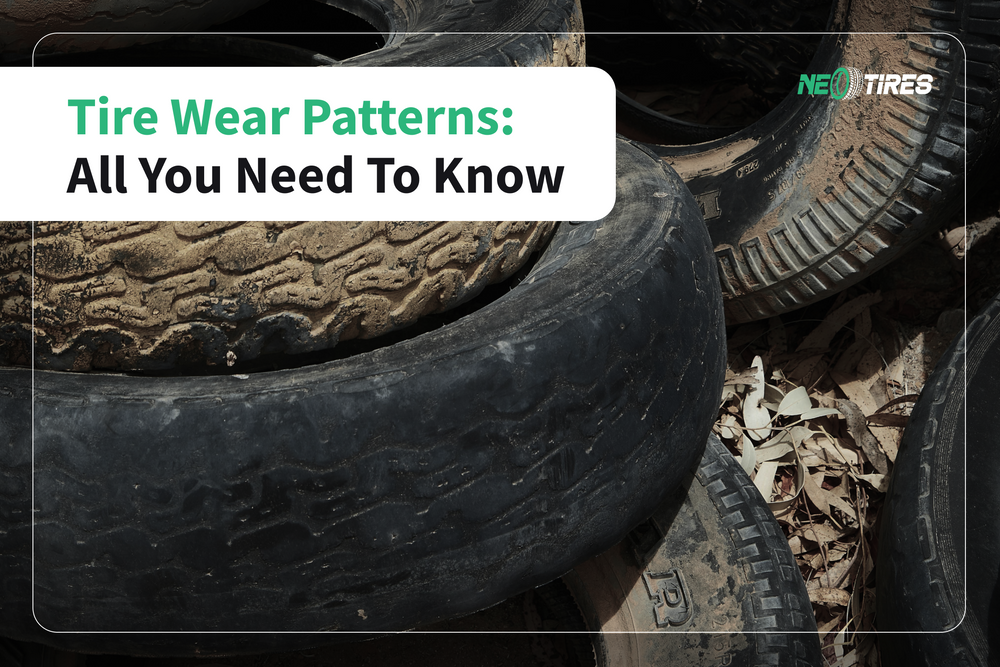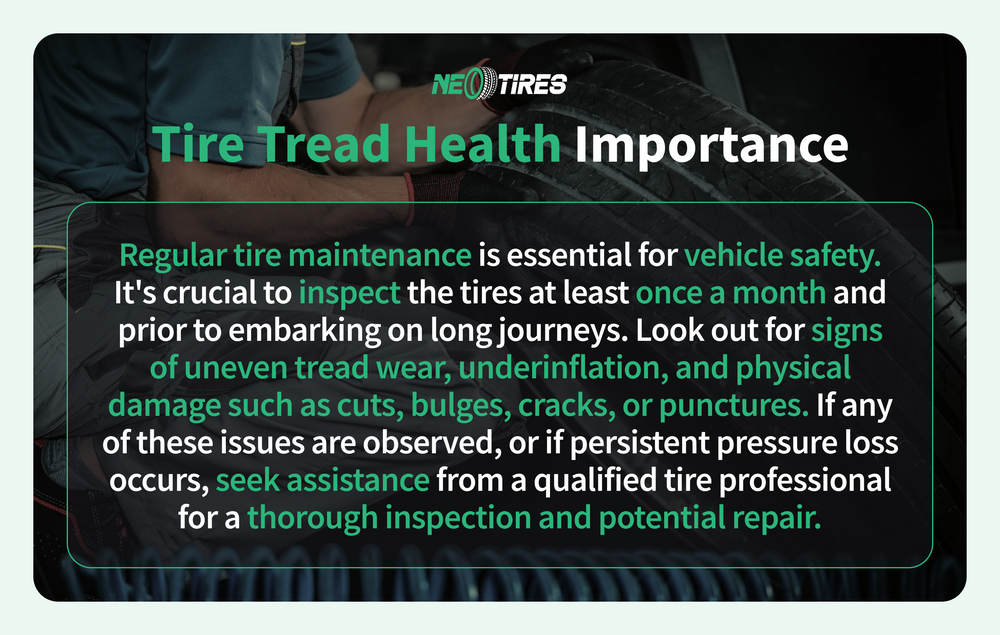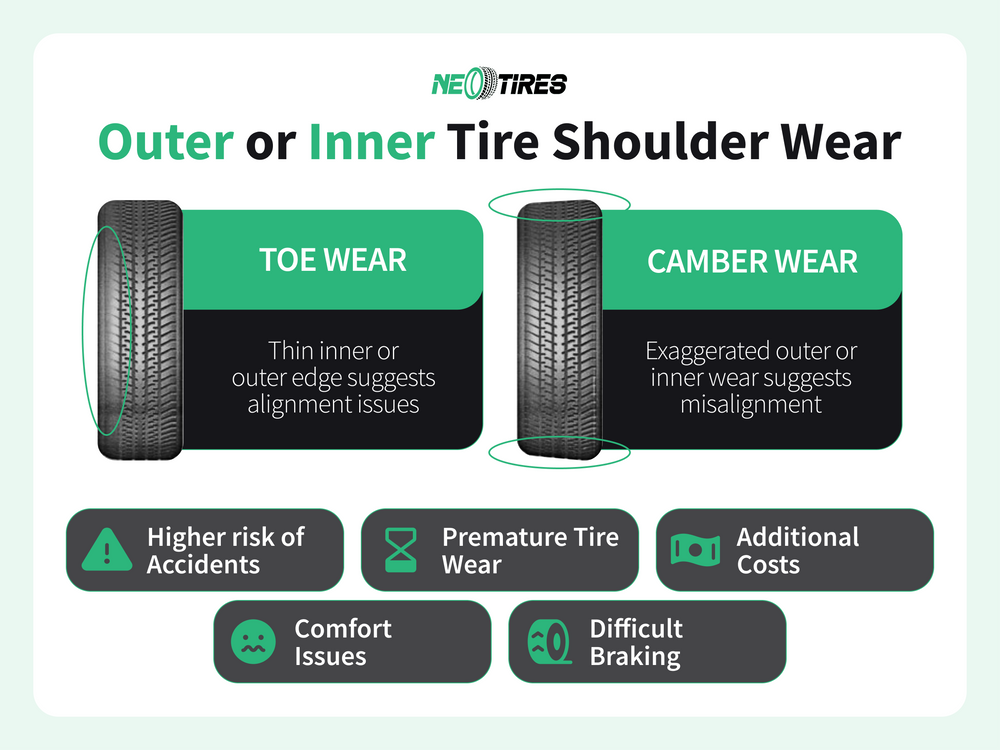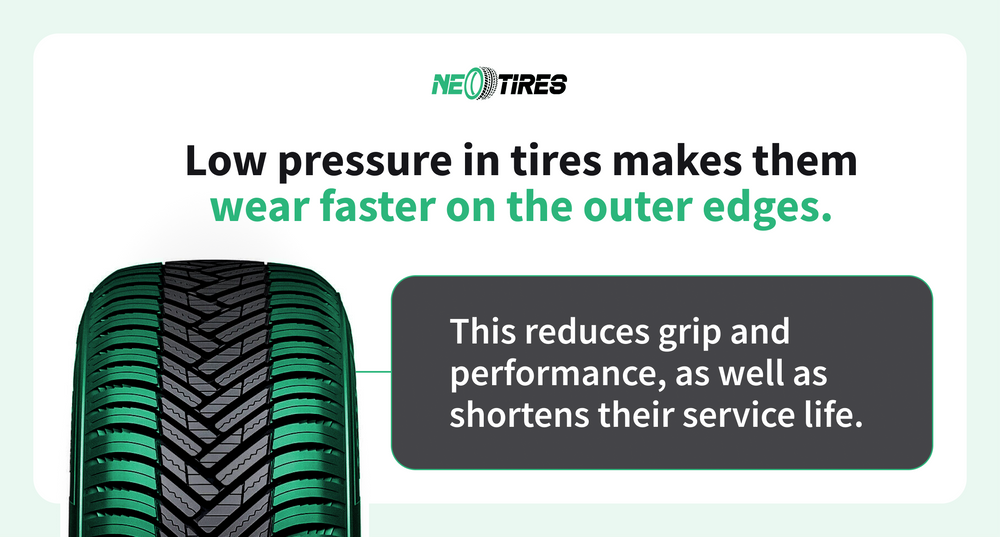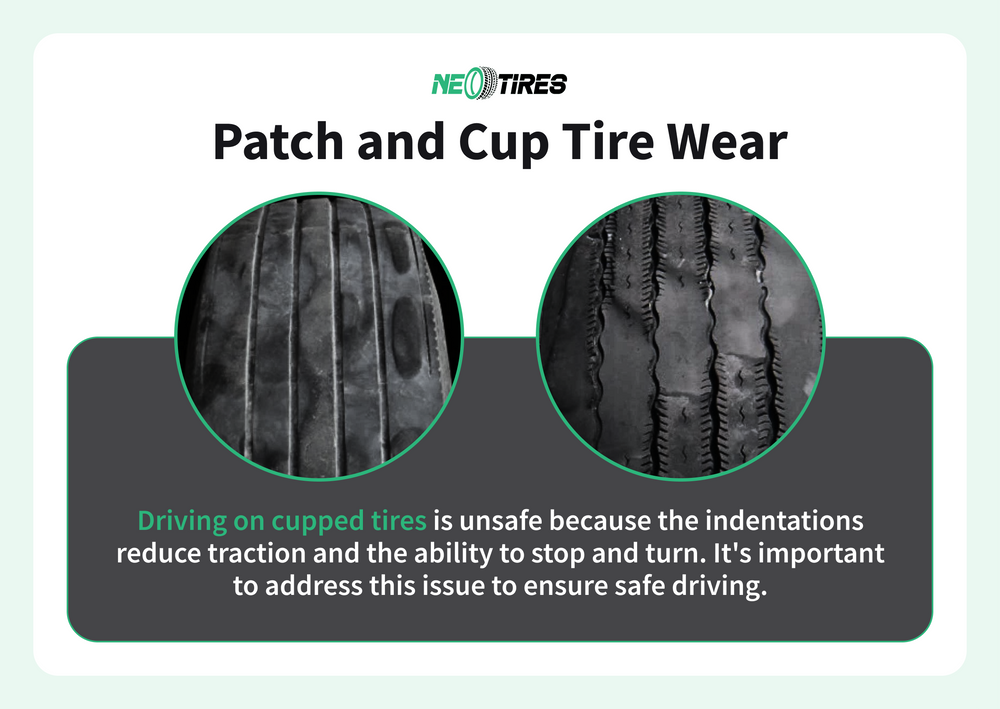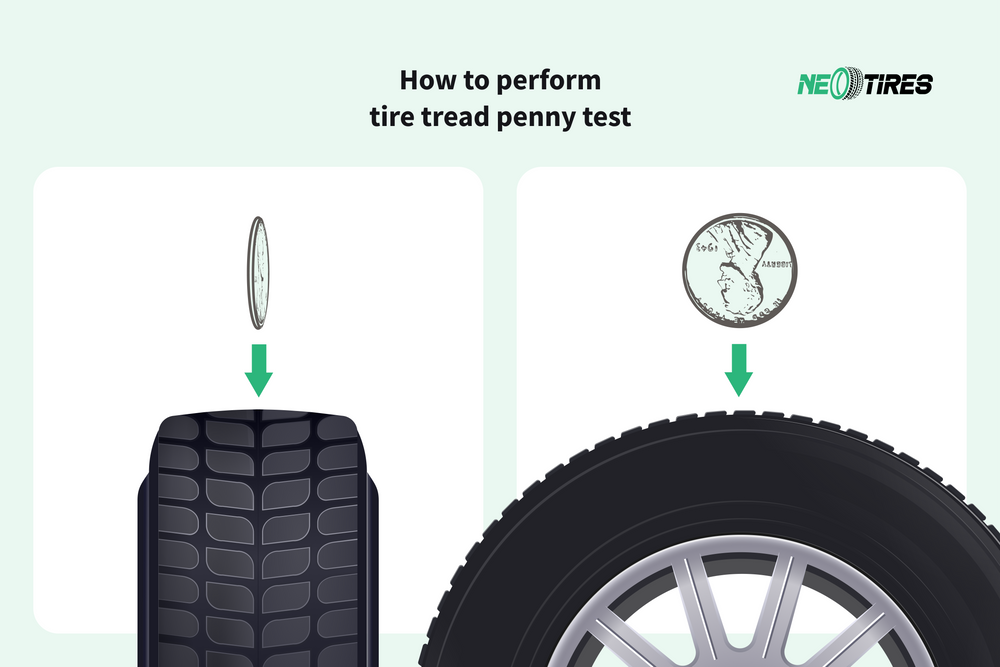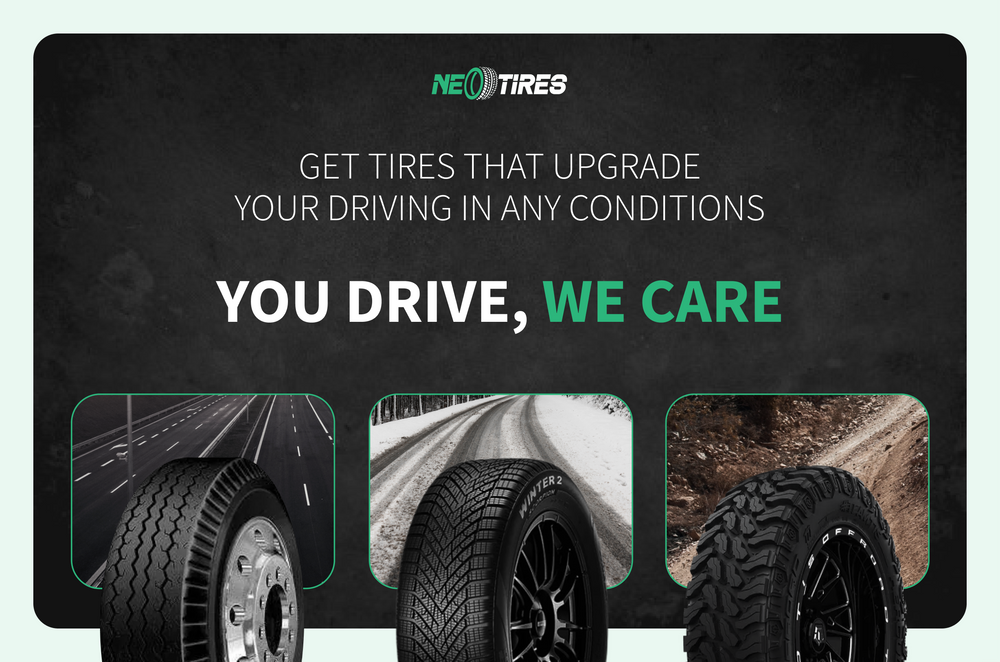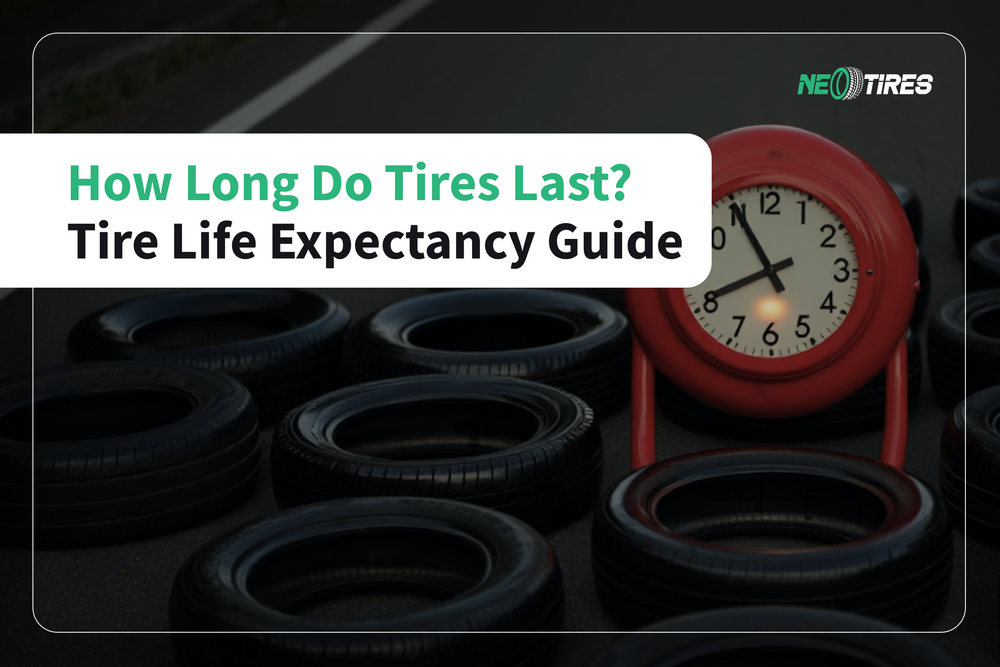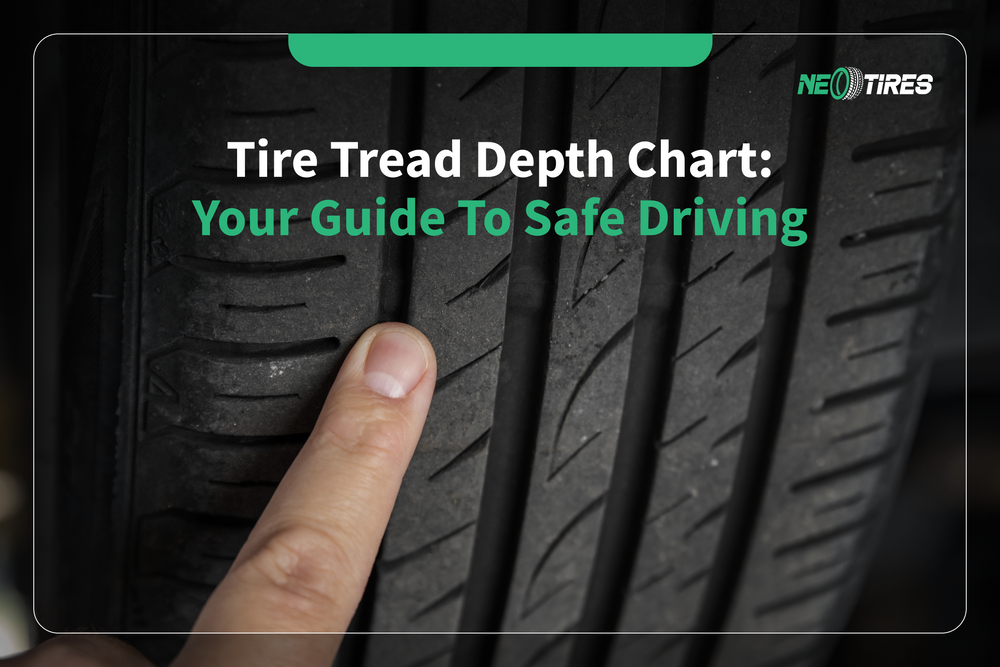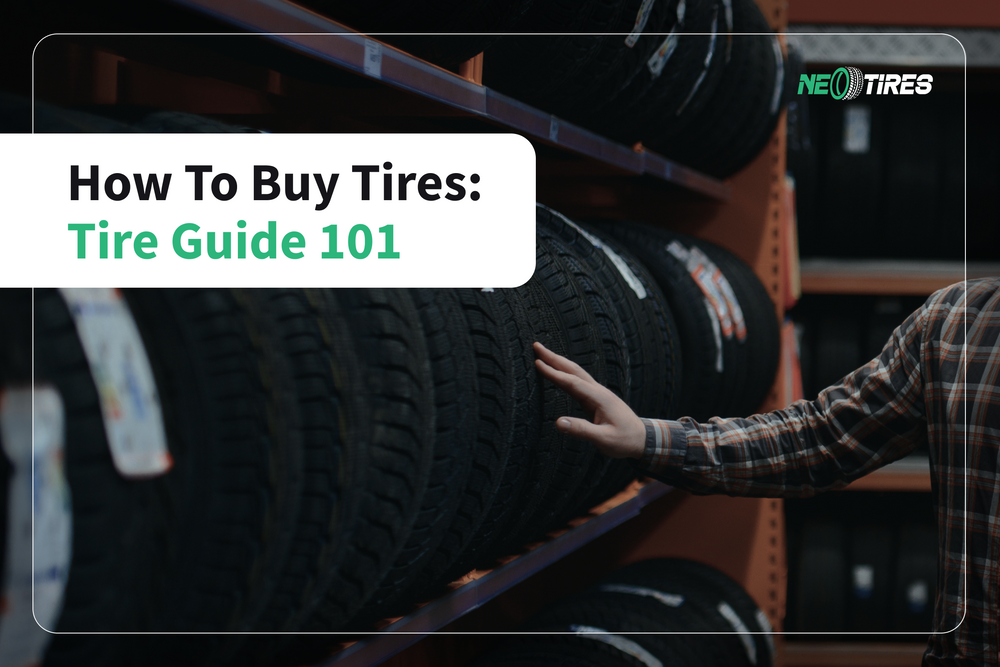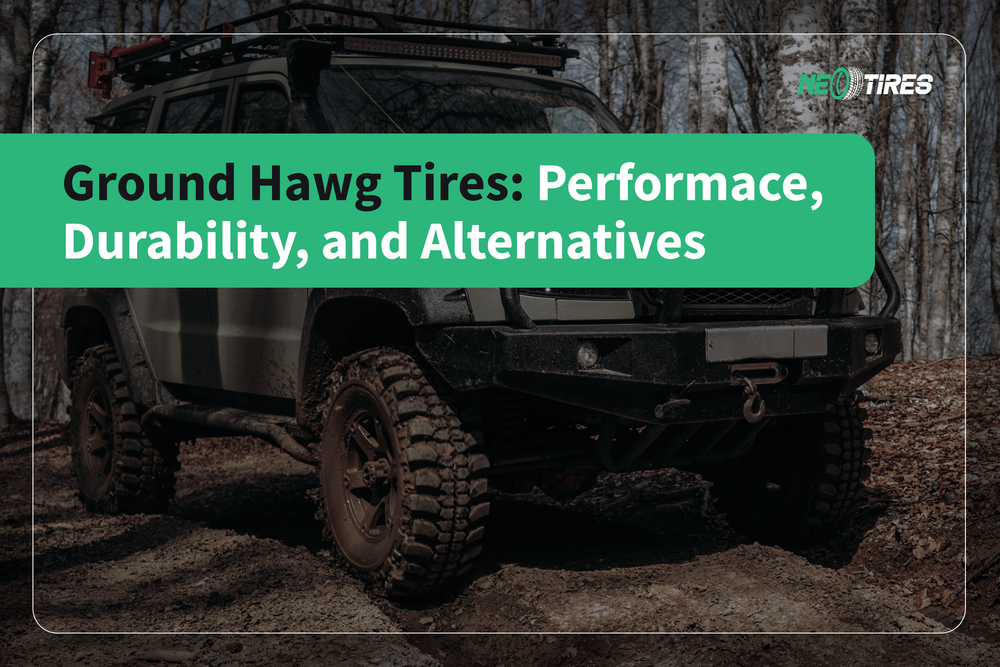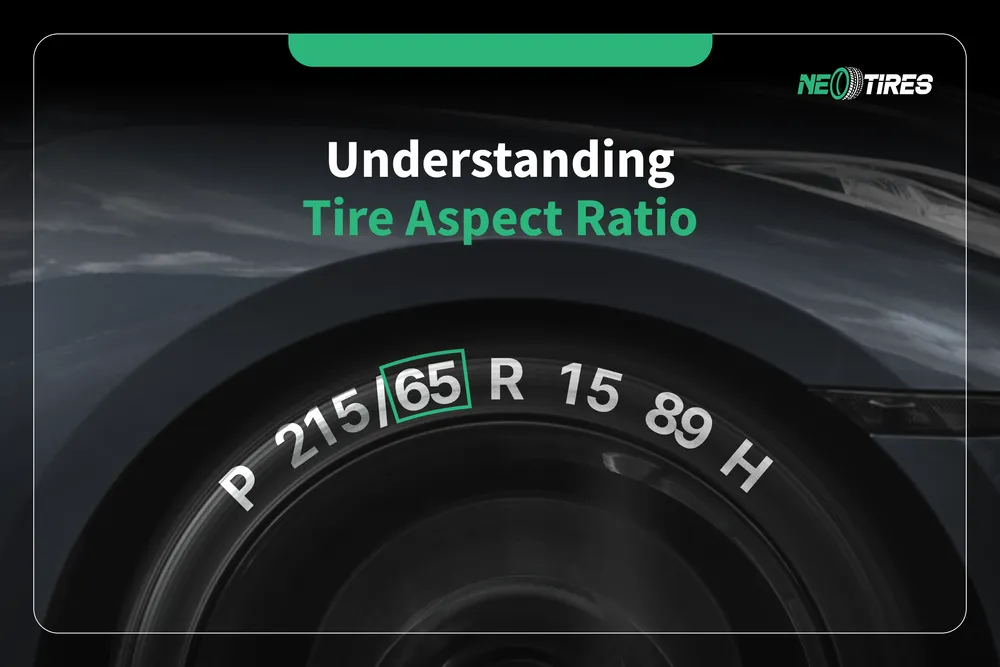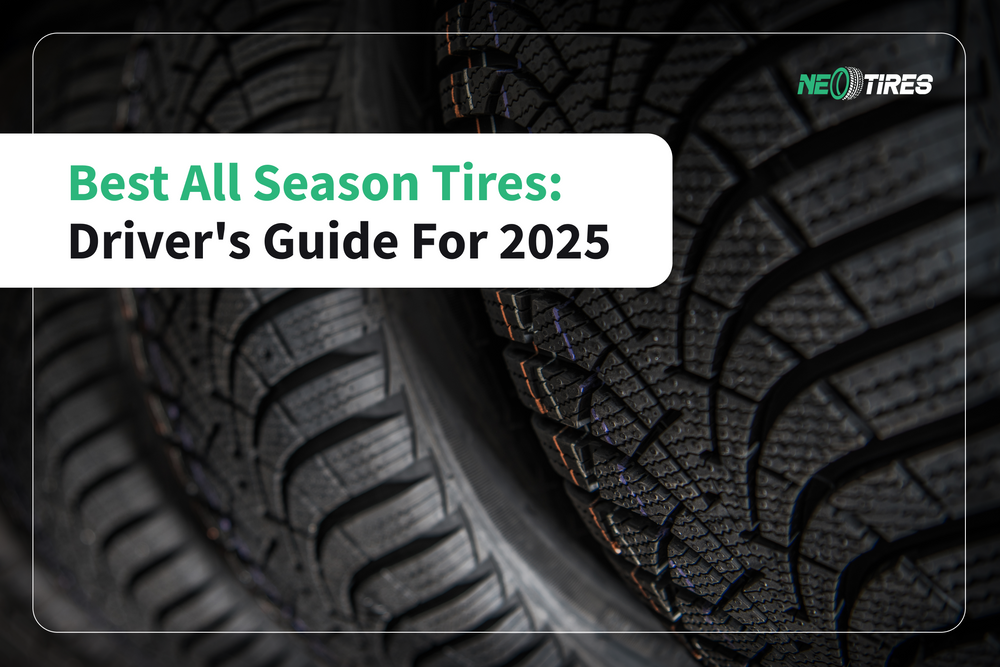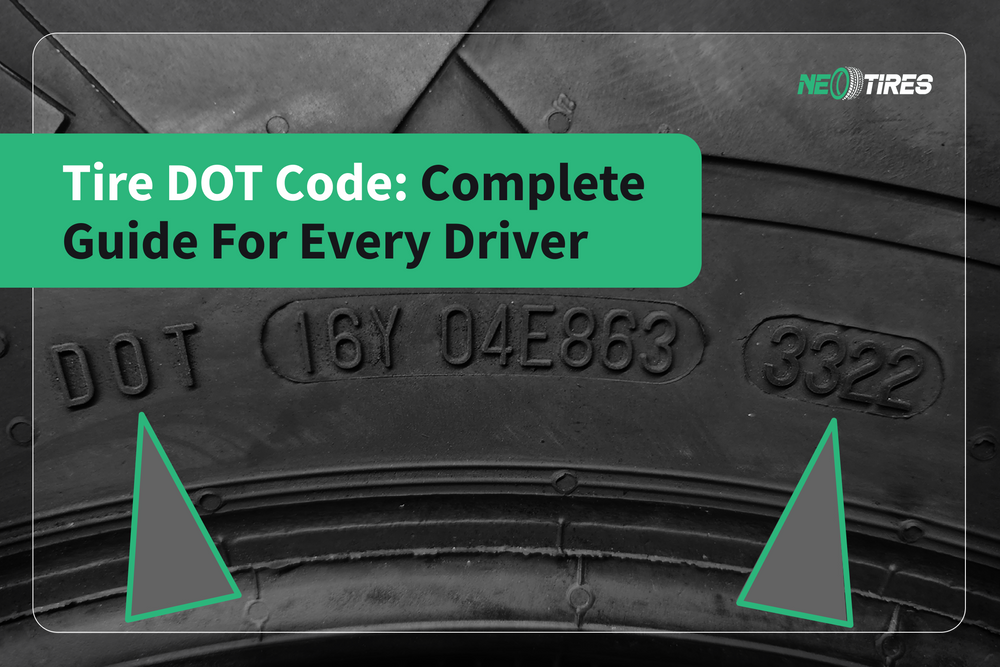Tire wear patterns refer to tire areas that are affected by uneven wear. Uneven tire wear can indicate alignment issues, suspension problems, incorrect inflation, or impaired driving habits. Tire uneven wear can escalate if not appropriately addressed, posing serious risks to drivers. Learn more about common tire uneven wear patterns and how they can be fixed to extend your tire's life and ensure driving safety.
6 Common Tire Wear Patterns
Six common tire wear patterns include toe, camber, center, edge, patch, and cup wear. Toe and camber tire wear typically develops because of wheel alignment issues. Center and edge wear (both inner or outer tire edges) indicate improper inflation (overinflation for the central wear, underinflation for the edge wear). Patch and cup tire wear usually manifests because of tire imbalance or bent suspension components.
Tire Center Wear: Overinflation
The central worn part of the tire tread indicates that the driver overinflated his tires. With overinflation, the tire's central part comes into contact with the road more than its edges. This accelerates tire wear in the respective area, shortening the tire's life span and impacting performance (decreased traction, longer braking distance, stiffer ride).
The driver should stick to the manufacturer's recommended tire pressure to avoid central tire wear. Overinflation is typically tempting, as the tire rolling resistance drops, optimizing the MPG. However, driving on overinflated tires reduces their service life, forcing the driver to buy new tires sooner. So, the economy is, in fact, a false one.
Toe and Camber Wear: Misalignment
Camber and toe wear suggest alignment issues in the vehicle's steering setup and suspension. When viewed from the front, camber wear shows on one side of the tire as it tilts inward or outward (negative/positive camber). Toe wear manifests through smooth edges on one tire side and sharp edges on the other when looking from a top-down view. This happens because the tire is angled outward or inward (toe-out/toe-in) due to misalignment. Both scenarios need alignment correction.
Tire Edge Wear: Underinflation
Tire edge wear occurs when the tread wears more on the outer edges than on the center due to underinflation. When tires are underinflated, they have less pressure than needed, causing the edges to sag, increasing the contact patch with the road. Edge tire wear reduces tire lifespan and affects performance (lower fuel efficiency, poorer handling, longer braking distance).
Cupping Wear: Suspension Issues
Tire cupping looks like a wavy tread wear pattern, with low and high points along the tire tread. Commonly known as scalloping, tire cupping wear can result from suspension issues (damaged struts or shocks), tire imbalance, or incorrect alignment. Cupping tire wear typically accompanies road noise and vibrations, poor handling and stability, and a reduced lifespan.
Patchy Tire Wear: Rotation or Suspension Issues
Patchy or diagonal wear along the tire circumference shows inconsistent wear spots, indicating suspension (worn or damaged components), rotation (falling to rotate tires), balance (lack of tire balancing), or driving habits (for example, hard braking) issues. Patchy tire wear affects driving performance, compromising grip, poor handling, and low ride quality.
Tire Uneven Wear: FAQs
Why Does the Tire Tread Wear Unevenly?
Several factors lead to uneven tire wear: incorrect tire pressure, lack of alignment and rotation, suspension issues, wheel imbalance, or impaired driving habits. To regulate tire wear, consider adjusting pressure, rotating timely, balancing properly, and aligning wheels regularly. Learn more about how to solve tire wear issues, as Michelin recommends.
Is It Safe To Drive With Uneven Tire Wear?
No, driving on unevenly worn tires is unsafe because it affects handling, grip, traction, braking distance, and vehicle ride quality.
How Do You Read Tire Wear?
To read tire tread wear, consider the following steps: inspect the tire tread surface (check for signs of uneven wear), use a tread depth gauge (check tread depth on different tread areas), examine the tread edges, use the Penny Test, and monitor tread wear indicators. All these steps help evaluate the degree of tire tread wear and determine its unevenness level.
Uneven Wear On Your Tires? You Might Need Replacement
If excessive tire wear affects your vehicle handling and performance, your tires may need replacement.
At NeoTires, you will find the right fit for your needs, budget, and vehicle specs. Prioritize your safety and explore our top-rated tires.
Need assistance? Our trained team will guide you to find the best products! Drive safe and choose your tires wisely!
Why Trust NeoTires?
We are a passion-driven team interested in the automotive and tire industry. We learn and follow all that happens in this industry and share our knowledge with our readers and customers to improve their driving experience. Our goal is to make a positive and qualified contribution to all drivers. We do this through professional recommendations, tips, validated blog posts, or the right tires for each need.
The NeoTires team is here to help you match your driving needs with the right products. This matching ensures a high-performance and reliable driving experience. Your safety, driving comfort, and pleasant customer journey are high priorities for us. Drive safe and choose your tires wisely!




